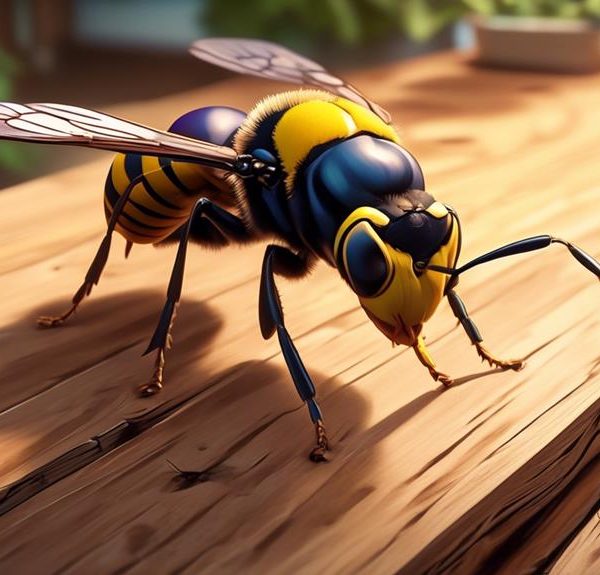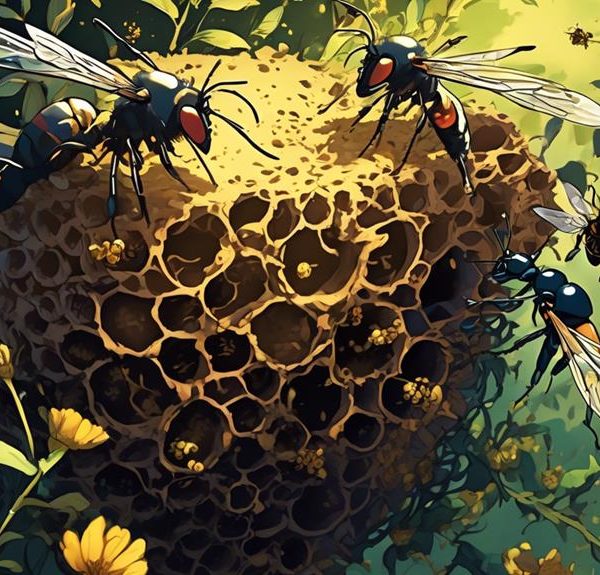Settle the buzz about Orchard Mason Bees and their honey-making abilities in this revealing exploration of these unique and misunderstood pollinators.
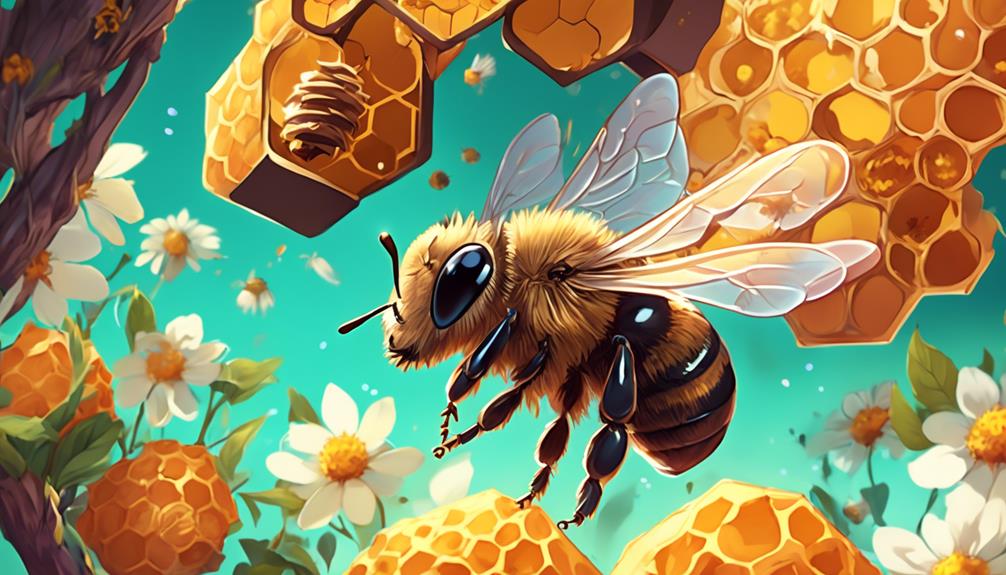
Do Orchard Mason Bees Make Honey?
You might think that all bees are born equal when it comes to the sweet business of honey production. However, it's not as black and white, or should we say yellow and black, as you might presume.
The Orchard Mason Bee, a solitary creature, is often mistaken for its honey producing cousin. As we embark on this exploration of these industrious insects, you'll discover the unique characteristics that distinguish them from their honeybee counterparts and unravel the truth behind the question – do Orchard Mason Bees actually make honey?
Let's uncover the fascinating details that lie beneath this common misconception.
Key Takeaways
- Orchard Mason Bees do not make honey, as their focus is on pollinating flowers rather than honey production.
- They collect nectar and pollen to create "bee bread" for their larvae.
- Orchard Mason Bees are smaller in size, about 1/3 inch long, with a metallic blue-black body.
- Unlike honey bees, Orchard Mason Bees are solitary creatures that live in individual nests within hollow reeds or holes in wood.
Understanding Orchard Mason Bees
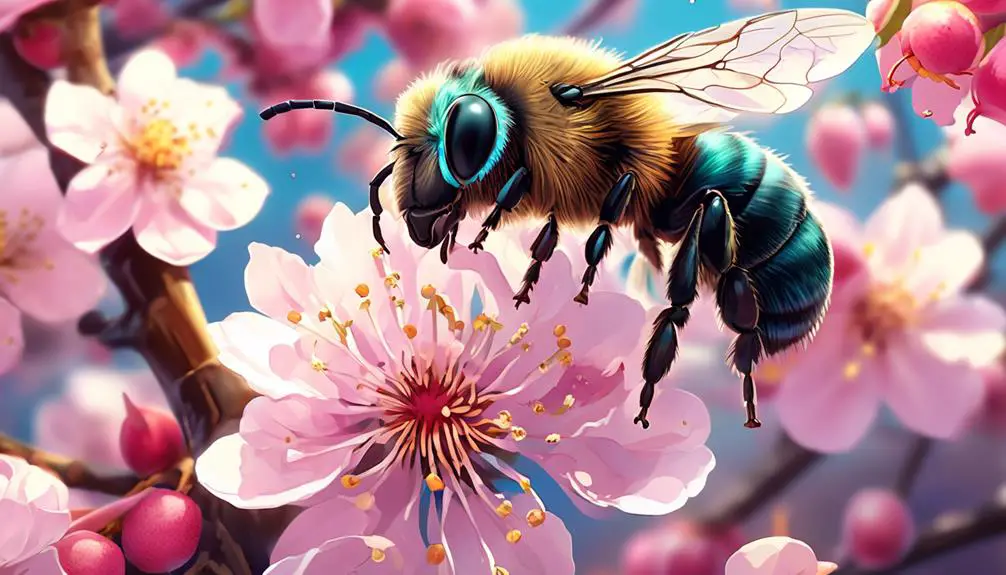
To truly appreciate the role of Orchard Mason Bees in honey production, you've got to understand their biology, behavior, and unique adaptations.
Unlike honeybees, Orchard Mason Bees are solitary creatures. They don't live in hives, but in individual nests within hollow reeds or holes in wood. These bees are smaller, about 1/3 inch long, and have a metallic blue-black body. They're expert pollinators, with an ability to pollinate far more efficiently than honeybees.
Instead of producing honey, they're busier pollinating flowers. Their hairy bodies pick up pollen while they forage for nectar, and upon visiting another flower, the pollen rubs off, facilitating pollination. This process is crucial for plant reproduction and crop yield.
Their behavior is non-aggressive. You'll rarely see them sting unless they're threatened. This is a result of their solitary lifestyle since they don't have a hive or queen to protect.
Their unique adaptations make them a boon for gardeners and farmers alike. They're hardy creatures, able to withstand colder temperatures than most bees. This resilience, combined with their impressive pollinating skills, makes them a vital component in our ecosystem, even if they don't produce honey.
The Diet of Mason Bees
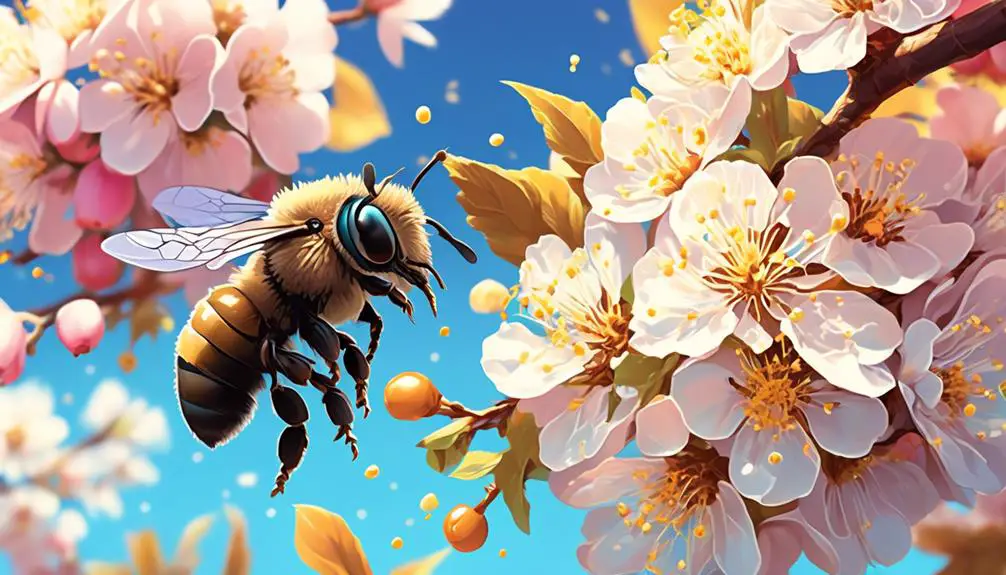
Understanding what Mason Bees eat is an essential part of grasping their role in the ecosystem. Unlike honeybees, which consume and store honey, Mason bees have a diet primarily composed of nectar and pollen from various flowering plants.
You might wonder why such a diet matters, well, it's intricately linked to their role as superb pollinators. When they forage for nectar and pollen, they inadvertently transfer pollen grains, facilitating plant reproduction.
To further illustrate, let's delve into a table representation:
Nectar | Pollen | |
|---|---|---|
Use | Energy Source | Protein Source |
Where Collected | Flowers | Flowers |
Collection Method | Sucking | Brushing onto body hairs |
Storage | Consumed instantly | Stored in nest cells |
The table illustrates that nectar, sucked from flowers, provides them with the energy they need for their high-speed flight. Pollen, on the other hand, brushed onto their body hairs, serves as a protein source for their larvae, stored in the nest cells for their development.
Understanding their diet isn't just about knowing what they eat, it's about appreciating the unique role they play in nature's delicate balance.
Honey Production: A Bee's Process

In the world of bees, honey production is a fascinating, complex process that you'll find intriguing. It begins when worker bees collect nectar from flowers, storing it in their 'honey stomachs'. This isn't their actual stomach, but a special organ for storing nectar.
Once full, they return to the hive and regurgitate the nectar to other 'house bees'. These bees chew the nectar, breaking down complex sugars into simple ones. This process, known as inversion, makes the honey more digestible for the bees and helps prevent it from spoiling.
Next, the chewed nectar is deposited into the honeycomb. Bees then fan their wings over the nectar, causing water to evaporate and the nectar to thicken. This transformation from nectar to honey can take days, but the final product is a natural sweetener that doesn't spoil.
In contrast, Orchard Mason Bees don't produce honey. They collect nectar and pollen, mix it into a 'bee bread', and pack it into their nests for their larvae to eat. This highlights the diversity and adaptability of bees, each species with its unique contribution to the ecosystem.
Comparing Honey Bees and Mason Bees
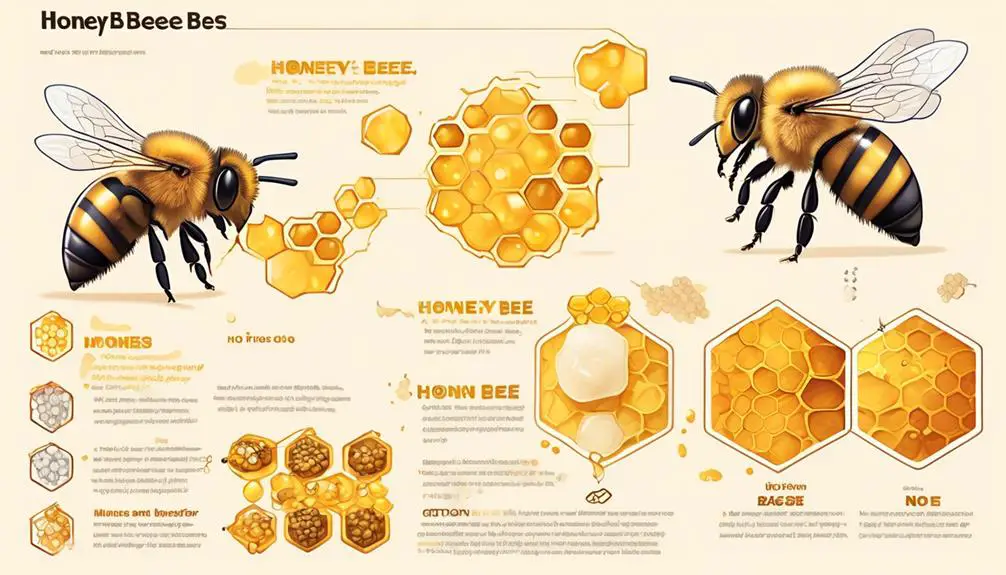
While appreciating the honey-making process of honey bees, it's equally crucial to compare their habits and behaviors with those of Orchard Mason Bees, another fascinating species that plays a significant role in our ecosystem.
Unlike honey bees, which live in large colonies, Mason bees are solitary creatures. They don't produce honey or wax and have a much shorter lifespan. You'll find Mason bees nesting in pre-existing holes, often in wood, where they lay their eggs and seal them with mud. This is a stark contrast to honey bees, who construct intricate hives and work as a team to produce honey and care for their brood.
Mason bees are also more efficient pollinators than honey bees. Unlike honey bees that carry pollen on their hind legs, Mason bees have pollen-carrying hairs on their abdomen, which enhances cross-pollination. This makes them crucial players in maintaining our food supply and preserving biodiversity.
However, it's worth noting that both species have their unique roles and strengths. Honey bees are valued for their honey production and wax, while Mason bees are champion pollinators. Understanding these differences can help us appreciate and protect these vital pollinators.
Dispelling Mason Bee Myths
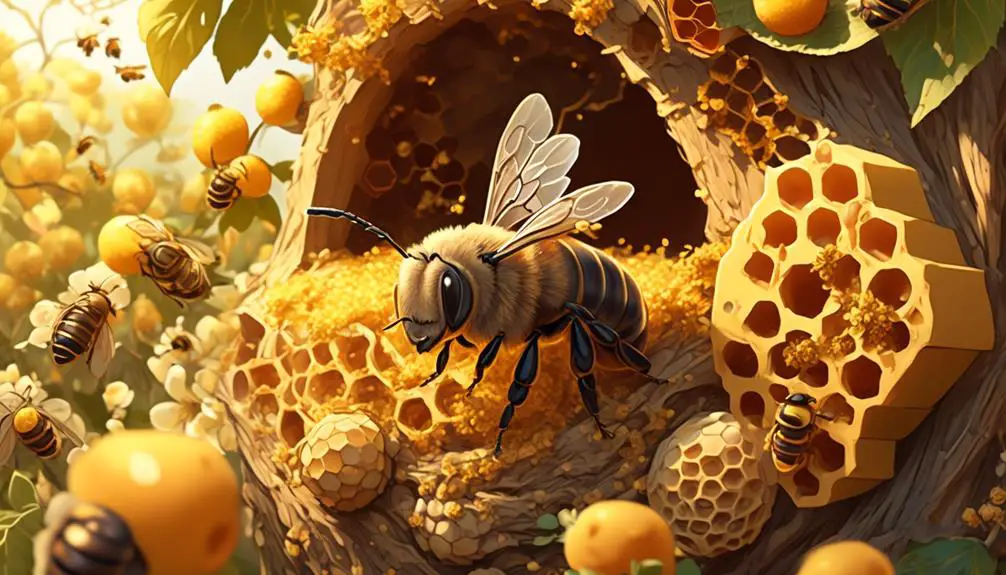
Despite the plethora of information available, numerous myths still circulate about Mason bees that can distort our understanding and appreciation of these industrious pollinators. Let's first dispel the belief that all bees make honey. This is false. Only honeybees and a few other species produce honey. Mason bees, on the other hand, don't produce honey but are superior pollinators, ensuring our gardens and orchards bloom.
Another misconception is that Mason bees are aggressive. In reality, they're solitary and non-aggressive. They don't have colonies to protect like honeybees, so they're less likely to sting unless threatened.
It's also believed that Mason bees are harmful to wooden structures. They're not. They seek existing cavities for nesting and don't excavate wood like carpenter bees.
Lastly, you may have heard that Mason bees are hard to attract. This couldn't be further from the truth. With proper housing and a source of mud for their nests, Mason bees can be a welcome addition to your garden.
Conclusion
So, you've discovered that Mason bees don't produce honey! Their diet of nectar and pollen fuels their energetic lifestyle, but they lack the social structure and specialized roles of honey bees.
Instead of honey production, these solitary bees focus on pollination. Don't dismiss them as any less important than their honey-making cousins. Remember, these little workers are vital players in maintaining biodiversity and supporting our ecosystems.
Every bee has its unique role and contribution!

